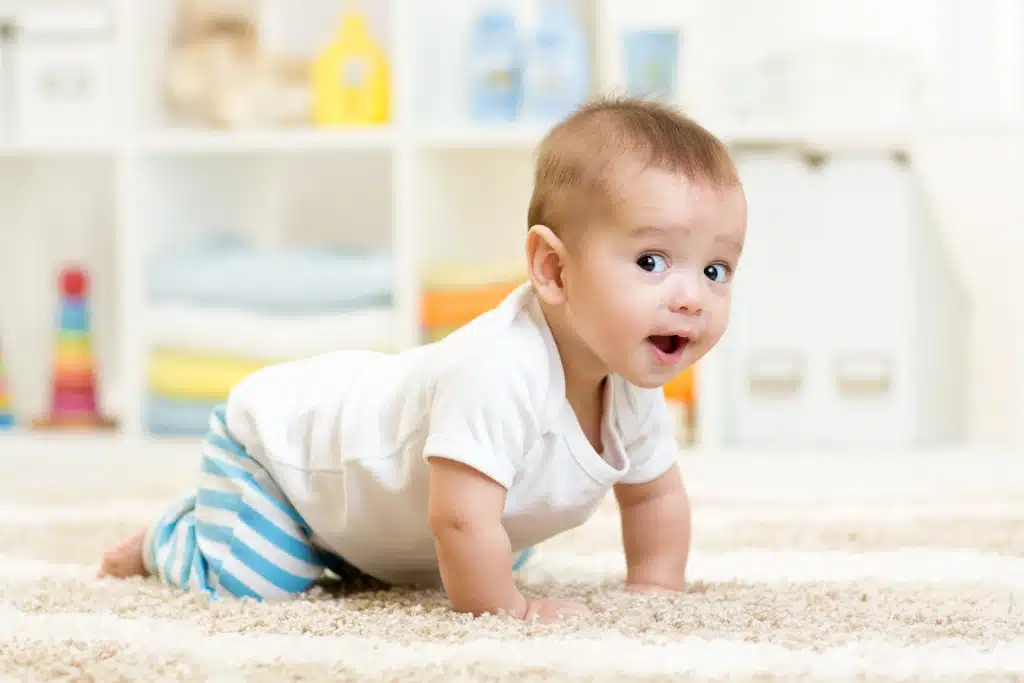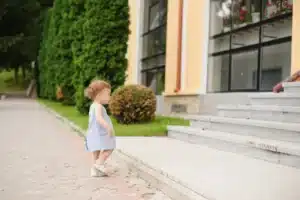By Nicole Crisan, PT, DPT
Does your child need to crawl?
Crawling serves as an important step for independent mobility. This skill typically emerges between 7-10 months of age. Crawling works on various aspects of development such as strengthening, bilateral coordination, motor planning, sensory integration, spatial awareness, and cognitive development. The skills learned by crawling are important foundational steppingstones needed for later stages of development including walking, standing, climbing, ball skills, and stair negotiation.
Between 7-10 months of age, other developmental skills might start to develop, such as pulling to stand at a stable surface, cruising, or standing independently. If your child is not crawling independently but is starting to attempt to perform these skills on their own, we do not recommend stopping them doing these activities. However, we do still recommend continuing to work on crawling for the benefits that this skill provides. You can work on crawling by allowing them to play and explore their home/community environments in different ways such as crawling over pillows/cushions, tunnels, or stairs/steps.
If your child is not actively attempting to stand or pull themselves to standing, then it is recommended to continue following the developmental sequence and work on crawling first.
Variations of Crawling
- Army Crawling: Initial phase. Babies start to move on their bellies, using their arms to pull themselves forward and while bending and extending their legs to move forward.
- Crawling on hands and knees: Your child is on their hands and knees and moves opposite arms and legs together to move forward.
Ways to work on Crawling/Pre-crawling activities:
- Tummy Time
a. Works on head control, arm and back strength
b. Placing toys slightly out of reach or off to the side to encourage moving on their bellies - Rolling
a. Works on head control, core strengthening, coordination, motor planning - Tall Kneeling
a. Placing arms on a vertical surface (wall/stable surface) or a box/container and keeping their bottoms off the heels of their feet
i. Can play at the fridge or dishwasher with suctions toys (here are some examples of toys: Wonder wheel, Spinning toys, Squigz)
ii. Placing box/container in front of a wall mirror
iii. Starting to move box/container forward and then assisting progressing one leg at a time forward working on motor planning and coordination
- Playing on hands and knees over leg
a. Hands in front over your leg, chest supported on your leg, and your child’s knees are bent over the other side of your leg
i. Encourage reaching and weight shifts by placing toys slightly on the right or left side
ii. Placing a mirror in front of your child (can put suction toys on mirror) to sustain engagement during the activity
When to Seek an Evaluation:
- Asymmetrical Crawling: If you notice your child pushing/pulling themselves forward using only one side of their body
- Only scoots on their bottom to move around on the floor
- Poor tolerance in being on their tummies or on their hands and knees
If you have concerns, you can contact our clinic to request an evaluation or book a free consultation with a physical therapist.
Additionally, we have tummy time classes that are open to parents and their child in which skilled pediatric physical therapists work with families to work on activities for tummy time, rolling, pre-crawling, crawling, pre-sitting, and sitting skills. Our therapists are also there to answer any questions regarding gross motor development and are to provide support and build a community for our families. If you are interested, please call (818-864-6602) or email (contact@uplifttherapycenter.com) us for more information and to reserve your spot for the next class!




